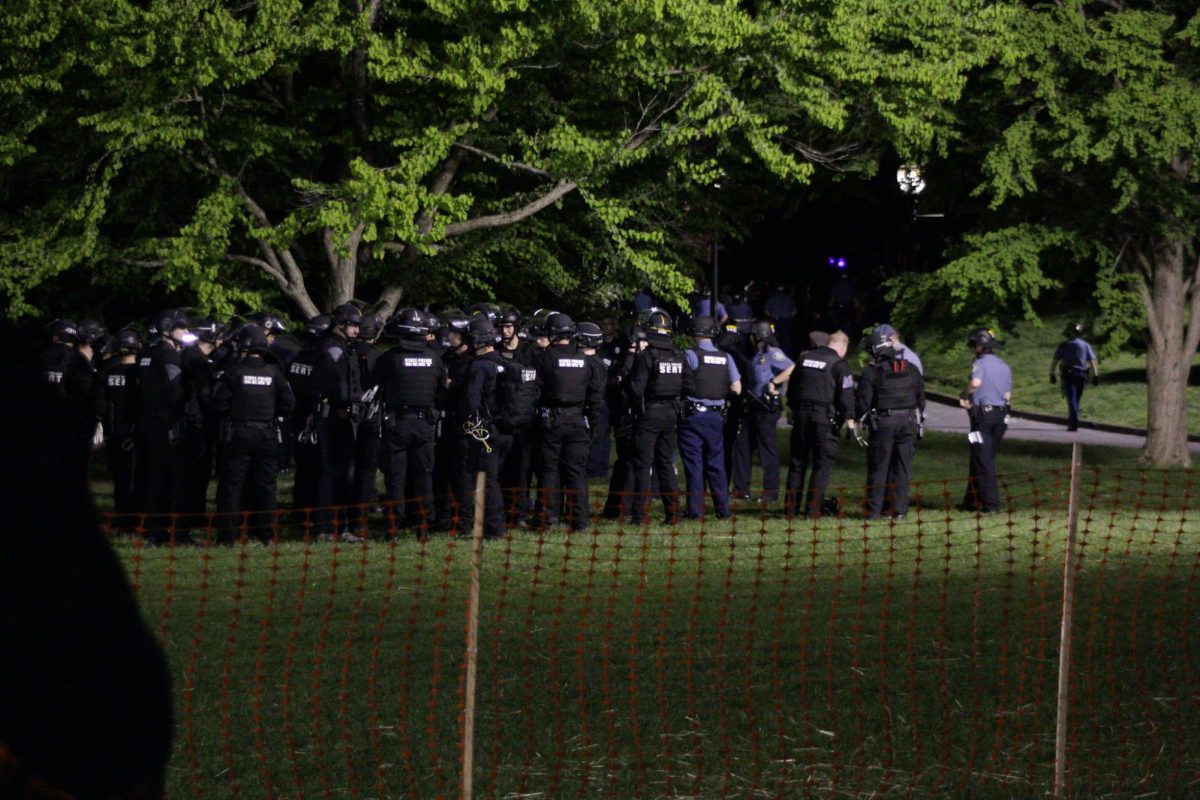
“Do you vape, bruh?”
That’s a phrase we are all relatively tired of hearing by now. You may have heard someone yell something similar through a cloud of thick vapor outside a party, or seen a very pissed off blonde stamping through the hall of your residence building, asking, “Who the hell has my vape?”
As college students, we find ourselves inundated with the “vape culture.” For me, it began to infiltrate my high school class in my final year in my suburban town and spread like, well, smoke—or more accurately, vaporized e-liquid. If you don’t vape, odds are one of your friends does.
For those who don’t know, vaping is the inhalation of e-liquid vapor through any type of vaporizer, of which there are numerous type. Vaporizers, tanks, mods, box mods and those little blue-tipped electronic cigarettes (e-cigs) all fall under the popularized “vape” umbrella. The juice inside typically contains nicotine and comes in a variety of flavors—anything from fruity, to candy flavors, desserts or even breakfasts. Some notable flavors include “Fruit Hoops,” “Flint Stoned” and the crème de la crème of online vapor company Vape Wild’s marketing team (and my personal favorite), “Glazed and Confused.” There’s even a “Pumpkin Spice Latte” flavor to go with your Starbucks and Ugg boots. Mikka, Vape Wild’s helpful online associate, recommended a flavored juice called “Murica,” in case anyone is looking to express their devout patriotism in a new and creative fashion.
The culture that has grown around the e-cig phenomenon is quite expansive, with online communities emerging such as Vaping Daily. Vape tricks have become an annoying social media phenomenon in that “but it’s kind of cool” way, and according to Quit Smoking Community, the industry had grown to $3.5 billion in 2015, from $1.7 billion in 2013, and is now skyrocketing toward the $5 billion mark. Most importantly, vaping is “cool.”
There is much praise for the invention and widespread use of vaping as a healthier alternative to cigarettes, which is obviously a positive development. The trouble arises, however, in the disparity between the intended purpose of the practice and the culture that has developed around it. It is true that vaping is at least 95 percent healthier than smoking and lacks the ever-so-demonized tobacco monster contained in cigarettes, helping smokers eventually quit smoking or at least find satisfaction in what is indeed a healthier alternative.
However, so many vape users are young kids and teenagers. The practice has become exceedingly popular among these demographics, which are often not heavy smokers. Most teens try vaping without having had any prior exposure to cigarettes, and will eventually adopt vaping as a regular practice or even start smoking cigarettes, due to tobacco’s disregarded uglier step-sister, nicotine. E-juice can contain anywhere from zero to 42 milligrams per milliliter of nicotine, compared to the average cigarette containing around 12 mg of nicotine.
For a lot of young kids, vaping can easily become a gateway to nicotine addiction under the guise of it being “healthier than cigarettes,” and others can spiral into actual cigarette addiction.
It seems as though every time I attempt to question the sanctity of vaping, I am immediately met with contrary health statistics. It is absolutely true that vaping is better than smoking, and I do not attempt to contend with that fact. Vaping, when applied correctly, can be of great benefit to a large number of people grappling with nicotine addiction. The actual dangers of vaping, however, are anesthetized by these widely circulated, albeit true, assertions. The trouble is that they are true for a demographic entirely different than the one in which vape culture has erupted.
Adolescents, particularly those on the younger side of that spectrum, should know what they are getting into and the potential risks to their health. The other day, my brother, a freshman in high school, asked me if he should get a vape, but I know he would never think twice about refusing a cigarette. With vaping, the line is a little hazier (no pun intended).
A lack of education, compounded by friends constantly vaping on social media platforms to glamorize the practice, blurs the issue. Generally speaking, even kids are very aware of the danger of cigarettes and most, if offered one, would answer, “No.” When it comes to vaping, however, the right choice is ambiguous. I don’t wish to propagate a campaign against vaping or vilify it to an unreasonable extent, but what I am proposing is that as a society, we begin addressing vaping as a presence in youth culture, and encouraging education regarding the health risks. And to the girl in my hall, maybe you could take this time apart from your vape to figure out if you two are really meant for each other.
Isobel McCue is a Collegian columnist and can be reached at [email protected].



















Martin • Apr 8, 2018 at 5:51 am
I really enjoy vaping articles that are enjoyable and based on facts. Definitely will share with my smoking friends so that they finally will quit smoking and start vaping. I also found some interesting facts and guides at Ecigopedia http://ecigopedia.com/ – maybe will be useful for some vaper or smoker. Vape on!
Victor • Jan 21, 2018 at 9:47 pm
This is a very timely topic. Kudos to the writer!
Jonathan • Jan 3, 2018 at 8:51 pm
Thanks for sharing this. I heard a lot of good and bad things about vaping.
Vaping Life Enthusiast • Nov 22, 2017 at 9:41 am
Thank you very much for the article. Really great topic and explanation. I hope that people will not get the wrong opinion about vaping.
Carol • Sep 27, 2017 at 7:44 am
Excellent, well written, timely topic – look forward to more from this columnist.